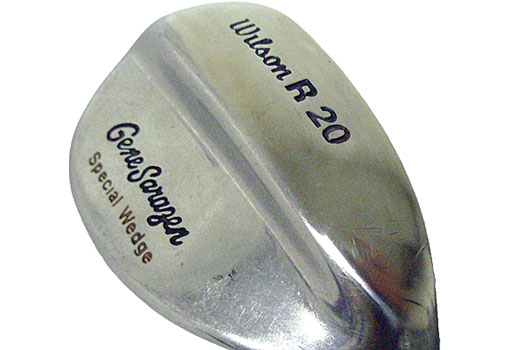
The Modern Sand Wedge
Golfers have been using specially designed clubs to blast out of the sand since the 19th century. At one point Walter Hagen, who notched 75 professional wins over his long career, used a wooden-shafted club with a smooth concave face, lots of loft and nearly eight ounces of weight in its flange to help him escape from bunkers. But it was Gene Sarazen who designed what would become the modern sand wedge. It had a steel shaft, markings on its face and the type of flange common on sand wedges today.
According to his daughter Mary Ann, who wrote an article in 2010 about the club’s origins, Sarazen was inspired by a flight he took with movie producer (and scratch golfer) Howard Hughes. As she put it, "When Hughes's plane took off, the flaps on the wings came down and my father made a connection between the flaps and the flange." A flange added to the back of the club, would "allow it to slide through the sand and help the ball pop up."
Sarazen was a tinkerer, "soldering flanges to his niblicks, which were similar to a modern pitching wedge," his daughter wrote. Sarazen sent those prototypes to Wilson in the early 1930’s and from them they manufactured the first modern sand wedge.
Structurally not a whole lot has changed since Sarazen’s prototypes. Lofts have increased from 50° to the standard 56°, but sand wedges still have about ten degrees of bounce. Of note, Sarazen also added a "reminder" grip on his clubs so he knew where to place his thumbs. Wilson incorporated those on his early models too.
Pages
Click here to see the published article.











